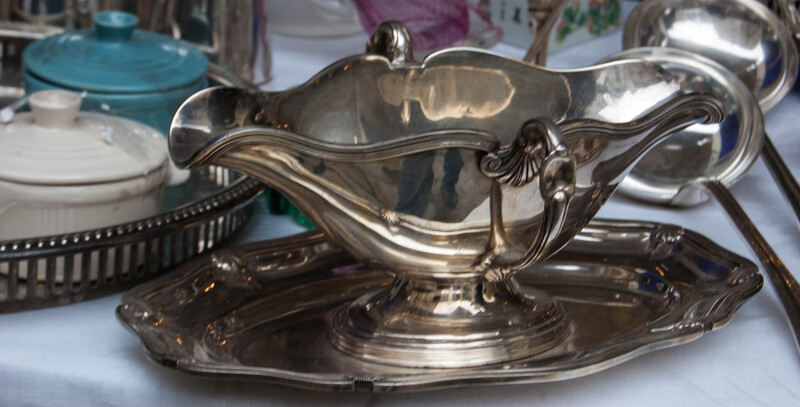Long-Term Solutions for Preventing Clutter Post-Organization
Decluttering your home or workspace is a rewarding and satisfying process, but maintaining that newly organized state can be the real challenge. Many people find themselves in a cycle of tidying up, only to watch chaos slowly return. How can you avoid this recurring scenario? The key is adopting long-term strategies that promote clutter prevention after organization. In this comprehensive guide, we uncover the most effective methods for sustaining an organized space and share practical tips to ensure your environment remains tidy, productive, and stress-free.
Understanding the Causes of Clutter Recurrence
Before diving into solutions, it's crucial to identify why clutter returns in the first place. Recognizing these causes enables you to tailor your long-term decluttering approach.
Common Reasons for Post-Organization Clutter
- Lack of designated storage - Items without a 'home' quickly accumulate.
- Poor organizing systems - Systems that are too complicated or not tailored to your habits don't last.
- Impulse purchasing - Bringing in new items faster than you remove old ones accelerates clutter.
- Inconsistent routines - Skipping regular tidying sessions lets mess accumulate.
- Attachment to belongings - Sentimental items and indecision about discarding things make maintenance difficult.

Establishing Effective Long-Term Clutter Prevention Systems
Long-term organization is not about quick fixes. It is about building sustainable habits and systems that fit your lifestyle. Below, discover essential strategies for permanent clutter prevention.
1. Create Designated Spaces for Everything
Every possession must have a home. When your belongings have a designated spot, returning items after use becomes second nature. Consider these steps:
- Assess your storage needs: Analyze which rooms and items require dedicated storage solutions.
- Label containers and shelves: Visual cues primarily help family members and guests follow your organizational system.
- Utilize hidden storage: Maximize under-bed space, closet organizers, and multipurpose furniture.
2. Institute the "One-In, One-Out" Rule
The One-In, One-Out rule is a simple and effective guideline: for every new item that enters your living space, an old one must leave. This constant rotation ensures possessions do not accumulate unchecked, especially in high-clutter categories like clothing, books, and toys.
3. Adopt a Minimalist Mindset
While you don't have to become an extreme minimalist, embracing aspects of minimalism supports long-term decluttered living. This involves:
- Questioning purchases - Ask if the item serves a genuine purpose before buying it.
- Prioritizing quality over quantity - Invest in durable, multifunctional items instead of disposable or redundant ones.
- Letting go of duplicates - Retain only what you use and need.
4. Set Aside Regular Decluttering Sessions
Make decluttering a recurring event. Scheduling monthly or quarterly organizing sessions helps nip messes in the bud before they spiral out of control. During these sessions:
- Review commonly cluttered areas like mail spots, closets, and pantries.
- Purposely search for items you no longer need or use.
- Encourage household members to participate, fostering shared responsibility.
5. Implement Routine Maintenance Habits
Daily and weekly habits make significant impacts on clutter prevention post-organization. Examples include:
- "Touch It Once" rule: When you pick up an item, aim to put it away immediately.
- Reset rooms each night: Take 5-10 minutes nightly to restore areas to their tidy state.
- Process mail and paperwork promptly: Prevent piles by dealing with mail as it arrives--shred, file, or take action as necessary.
Organizational Tools for Lasting Clutter Control
Selecting the right organization tools and solutions can streamline clutter maintenance. Consider these options tailored to various spaces:
Entryway Solutions
- Shoe racks and boot trays to corral footwear.
- Wall hooks and shelves for keys, bags, and outerwear.
- Catch-all baskets for incoming mail and miscellaneous items, emptied daily.
Closet and Wardrobe Systems
- Slim hangers to maximize space.
- Drawer dividers for organized, visible storage.
- Seasonal rotation bins for off-season clothing.
Home Office Solutions
- Paper management tools such as file sorters, wall pocket organizers, and scanners for digital storage.
- Labelled storage boxes for supplies and cables.
- Cord organizers to keep workstations neat.
Kitchen Clutter Controls
- Drawer organizers for utensils and gadgets.
- Pantry bins and labels to categorize and easily identify items.
- Lazy Susans or turntables for spices and condiments.
Habits for Long-Term Organization and Clutter Resistance
Maintaining an organized space over time goes beyond just systems--it's about cultivating healthy habits and routines in your day-to-day life:
Mindful Consumption
- Pause before buying: Evaluate whether a purchase brings value or serves a need.
- Create shopping lists to prevent impulse buys.
- Discuss purchases with household members to avoid duplicates.
Declutter As You Go
- Keep a donation bin accessible for items you no longer need or love.
- Encourage a 'remove before you move' approach when reorganizing or redecorating spaces.
Practice Gratitude and Contentment
- Appreciate your current belongings and labors, which dissuades unnecessary accumulation.
- Recognize that long-term clutter-free living provides lasting peace and satisfaction.
Tackling Specific Clutter Hotspots
Certain areas consistently invite clutter. Addressing these proactively can make your efforts to prevent clutter more effective.
Paperwork and Mail
Solution:- Create an inbox basket for new documents, sorted weekly.
- Go paperless wherever possible, opting for digital bills, statements, and subscriptions.
- Use a filing system: To Read, To Pay, To File.
Toys and Children's Items
Solution:- Limit the number of toys accessible at a time by implementing a toy rotation system.
- Teach children where items belong using picture labels or color coding.
- Donate or sell unused toys regularly.
Clothing and Accessories
Solution:- Apply the hanger flip trick: Place hangers backward and only keep what you've worn after six months.
- Transfer out-of-season clothes to storage bins to streamline choices.
- Regularly audit and purge damaged or unused pieces.
Digital Clutter: The New Frontier
Modern clutter isn't just physical; digital organization is equally important for a streamlined life. To avoid digital disarray:
- Unsubscribe from unnecessary emails and newsletters.
- Use cloud storage for important files instead of desktop hoarding.
- Organize photos and documents into labelled folders.
- Set digital declutter reminders every quarter.
Encouraging Family or Housemates to Join the Cause
Long-term clutter control is a team effort, especially when sharing a home. Here's how to get everyone on board:
- Assign organizing roles and spaces: Let everyone take responsibility for certain areas.
- Hold regular family organizing meetings to review systems and address problem areas.
- Communicate expectations and use positive reinforcement to celebrate progress.

When to Seek Professional Help
If you consistently struggle with maintaining an organized space despite your best efforts, consider working with a professional organizer. Pros can provide:
- Personalized advice on lasting clutter prevention techniques.
- Assistance with designing systems that fit your routines, space, and organizational strengths.
- Accountability and motivation for ongoing maintenance.
Conclusion: The Path to a Clutter-Free Future
Achieving and maintaining an organized, clutter-free environment is a journey, not a destination. With determination, the right systems, and new routines, preventing clutter after organizing becomes second nature. Remember to:
- Give everything a home.
- Stay mindful about what enters your space.
- Schedule regular review and decluttering sessions.
- Leverage the right organization tools and habits.
- Involve all household members in the process.
By following these long-term solutions for preventing clutter post-organization, you'll enjoy the benefits of a tidy, stress-free, and welcoming environment--for good.